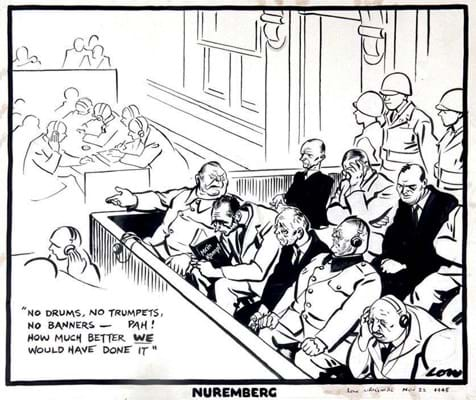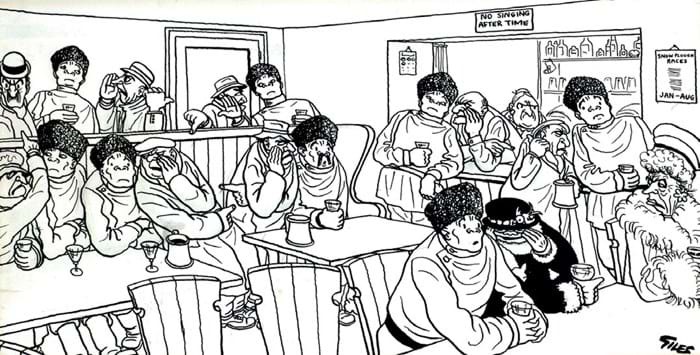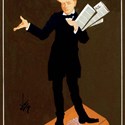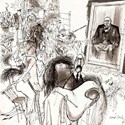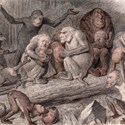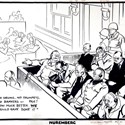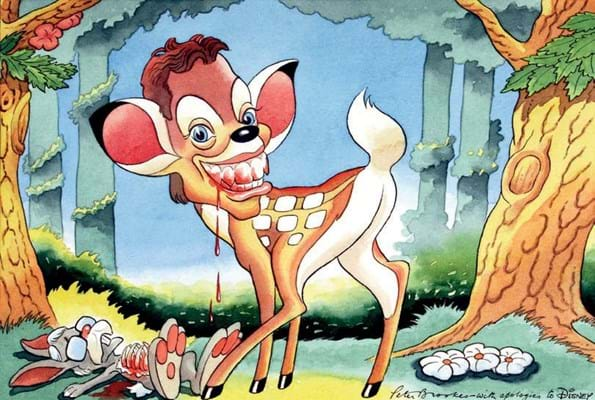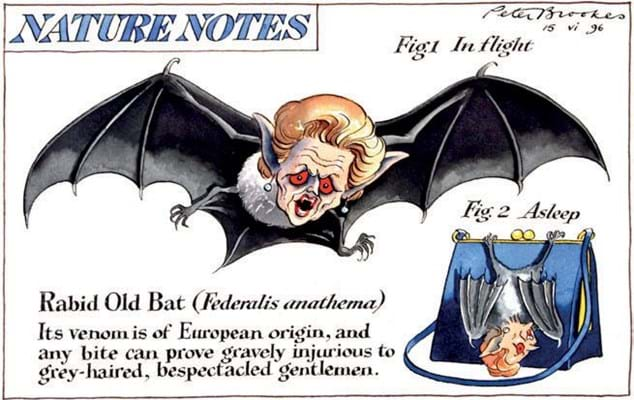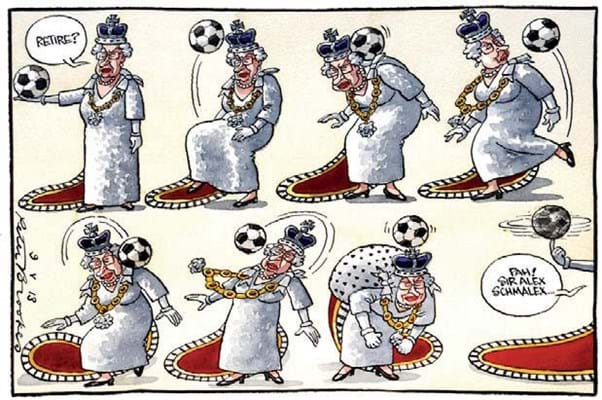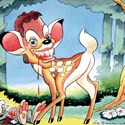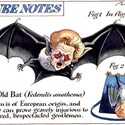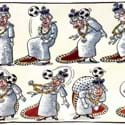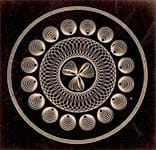However, it was depictions of others that were found in a March 14 sale held by Sotheby’s (25/20/12.9% buyer’s premium).
The auction dispersed the political cartoon collection that Archer built over a number of years with the collaboration and guidance of a wellknown specialist dealer in the field, Chris Beetles.
Archer had hoped that the 225-lot collection might find an institutional home, but encountered little enthusiasm for the idea and off to auction it went instead.
In the saleroom, private buying was to the fore as 174 of those lots sold for £457,055.
Bulldog spirit
Winston Churchill – as seen by Max Beerbohm, ‘Nibs’, Ronald Searle and others – was very much one of the star turns.
At £38,000, a more or less straightforward wartime portrait of a cigar smoking Winnie by Max Beerbohm, illustrated on the News Digest of ATG No 2235, was one of the day’s best-sellers.
A much earlier example of Beerbohm’s work, a 1909 ink and watercolour drawing titled Draughting a Bill at the Board of Trade was bid to £22,000.
A much younger Churchill, seated in an armchair and surrounded by older officials, says: “Oh, I understand all these figures, right enough. What we’ve got to do, Gentlemen, is to put some – er – humanising ginger into ‘em.”
Rupert Hart-Davis, in his 1971 Catalogue of the Caricatures of Max Beerbohm, notes that it was at one time in Winston’s possession and is reproduced in Randolph Churchill’s biography of his father.
The best-known image of Churchill produced by Frederick Drummond Niblett, better known as ‘Nibs’, is one that appeared in Vanity Fair in 1911. However, sold for £8000 in the Archer sale was one he had produced four years earlier.
Made for a short-lived publication called The Crown, The Court & Country Families Newspaper, it commemorates a speech made to the Scottish Liberal Association in Edinburgh.
In his catalogue introduction to the sale, Beetles noted that a Ronald Searle cartoon called Art: the British public knowing what it likes…, yet another Churchill-inspired work, was Archer’s first purchase.
First seen in Punch in 1954, it depicts angry men and fainting women, all appalled at their first sight of a portrait commissioned by Parliament from one of England’s more famous 20th century artists, Graham Sutherland.
The painting was intended to celebrate Churchill’s 80th birthday and Sutherland had done nothing to disguise effects of age in his portrait of the prime minister.
Churchill hated it, complaining that it made him look half-witted and it subsequently emerged that wife, Clementine, had decided that it should trouble him no more and arranged to have the painting destroyed. Searle’s splendid cartoon was sold for £11,000.
Gillray invades

Consequences of a successful French Invasion… or We fly on the wings of the wind to save the Irish catholics from persecution, a 1798 work by James Gillray, sold for £38,000 at Sotheby’s.
Matched in price only by Beerbohm’s cigar-smoking Churchill was one of the earlier items in the collection, Consequences of a successful French Invasion… or We fly on the wings of the wind to save the Irish catholics from persecution, a 1798 work by James Gillray.
Widely recognised, says Sotheby’s, as one of the finer Gillrays to have come onto the market in recent times, this too sold for £38,000.
It boasted an excellent provenance as a work from the collection of Draper Hill, whose biography of Gillray was published by Phaidon in 1965 and whose collection of Gillray prints and drawings was sold by Phillips in 2001.
Signed and dated 1882, a pencil and crayon cartoon by John Tenniel called Nuts to Crack that sold for £22,000 draws on Darwin’s wellknown evolutionary ideas to illustrate the current difficulties facing parliament.
At the centre lies a fallen tree, representing systematic obstruction by Irish nationalists of parliamentary procedure in order to call attention to their own political preoccupations.
The principal figures all hold nuts representing issues for debate. The dominant central figure of Gladstone holds one bearing the French term ‘clôture’, relating to the difficulties of bringing debates to a close, while to his left is seen the foreign secretary, Lord Granville, hugging a nut marked ‘Egypt’. This is a reference to the problems of who should have control over the Suez Canal.
At the rear of the work the only real simian figure present raises its arms in despair.
Prime Ministers in my day…, a Beerbohm cartoon of 1929, features the heads of the 11 men who had served as PM in his lifetime. Disraeli and Gladstone at lower right are instantly recognisable, as is David Lloyd George, third from top, but others may not be so quickly spotted. It sold at £26,000.
Published in the Evening Standard in November 1945, as the trials of major war criminals began, a David Low cartoon called simply Nuremberg was an example of a rather grimmer sense of humour. Arm outstretched, Hermann Goering exclaims: “No drums, no trumpets, no banners – Pah! How much better we would have done it.” It sold at £16,000.
A Giles cartoon from a 1963 issue of the Daily Express that has some resonance today refers to the infiltration of Soviet spies such as Kim Philby in the British establishment. It was prompted by an editorial comment in that paper: “In half an hour in a country pub the Russians would learn far more about the British than in all the museums and trading centres in the land.” It sold for £6000.
Blair and Brookes
Used in one of the saleroom’s front windows, a cartoon of Tony Blair feasting on the carcass of the then Prime Minister, John Major, proved quite an attraction and was one of many examples of the work of Peter Brookes featured in the Archer sale.
Has Bambi got Teeth?, used on the front cover of the Spectator in October 1994, was sold at £2400, while bid to £2800 was Brookes’ ink and watercolour original for one of the dozen examples of his familiar ‘Nature Notes’ cartoons on offer. Dating from 1997, it depicts Margaret Thatcher as a Rabid Old Bat.
No fewer than 24 examples of Brookes’ work were offered in the sale, most of which sold – but not all were intended to promote laughter or scorn. Bid to £4200 was Sisyphus…, which appeared in an August 2006 issue of The Times and relates to the UN’s seemingly impossible task of brokering a peace deal between Hezbollah and Israel.
The last of Brookes’ works to be offered, and the most expensive at £6500, was a 2013 cartoon, again from The Times, showing the Queen demonstrating her soccer skills. Retire? Pah! Sir Alex Schmalex seems once again quite topical.






